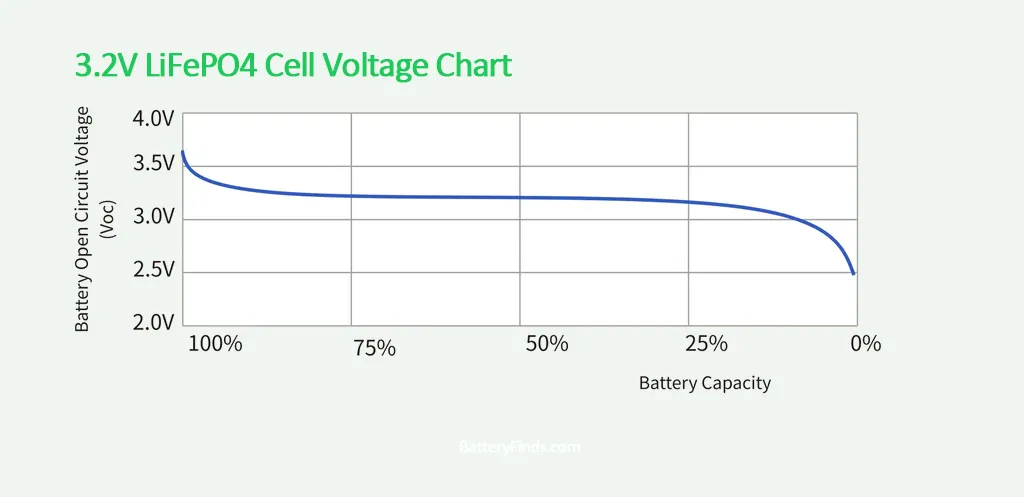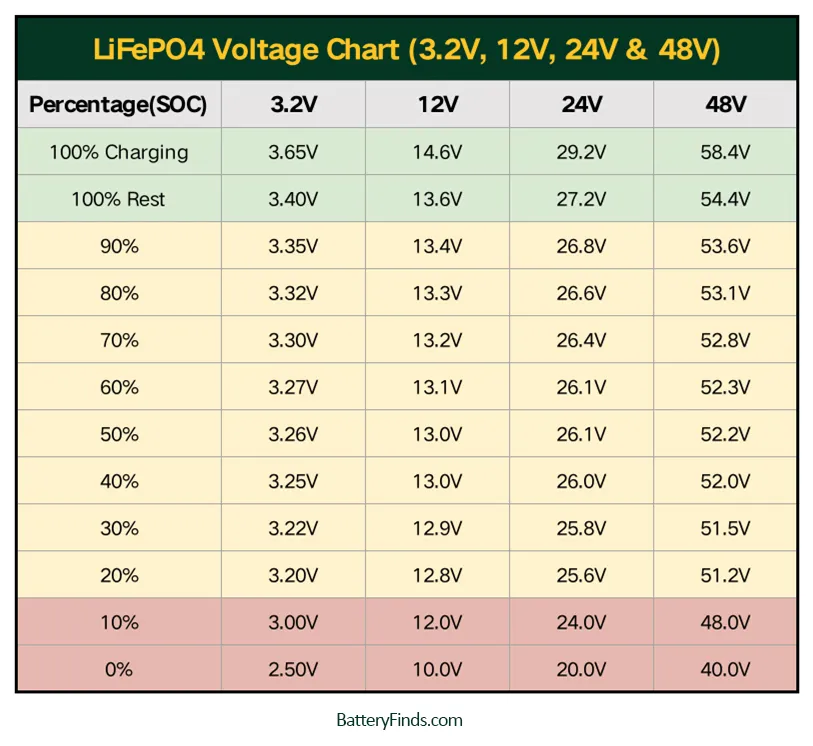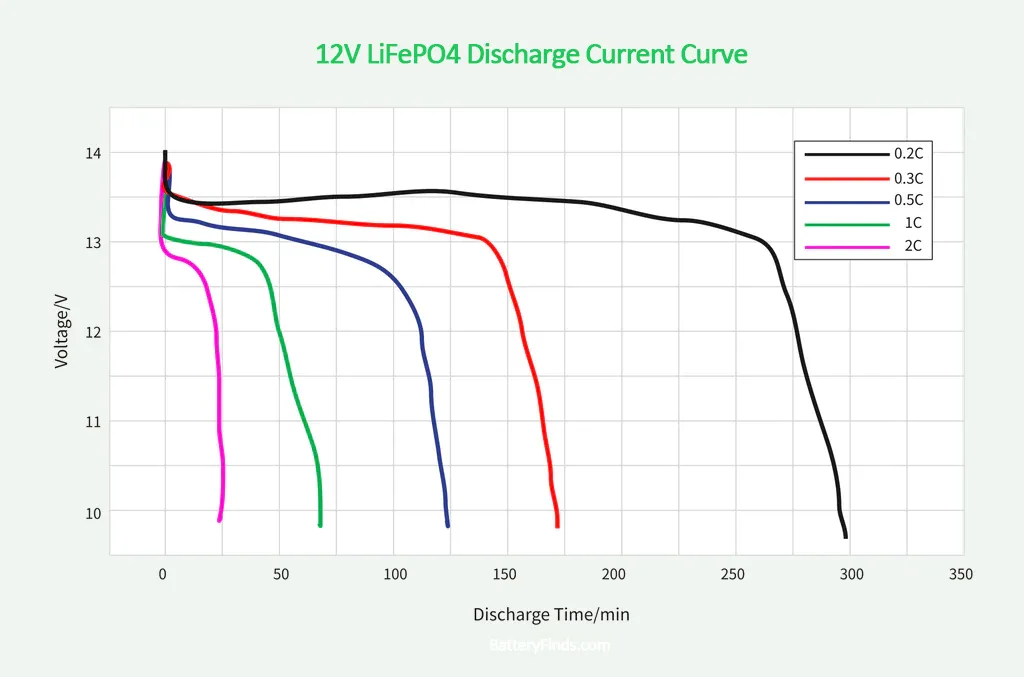Lithium iron phosphate (LiFePO4) batteries have become increasingly popular in recent years due to their high energy density, long cycle life, and improved safety features. One of the key advantages of LiFePO4 batteries is their voltage stability, which makes them a reliable power source for various applications. Understanding the LiFePO4 voltage chart is essential for monitoring the battery’s performance and ensuring safe operation.

A LiFePO4 battery’s voltage varies depending on its state of charge. The voltage rises as the battery charges and falls as it discharges. The relationship between voltage and state of charge is non-linear, meaning that a small change in voltage can cause a significant change in State of Charge (SOC).
The following table shows the typical voltage ranges for a LiFePO4 battery at different states of charge:

Voltage is a critical factor that affects a LiFePO4 battery’s performance. A battery’s voltage affects the power it can deliver, the amount of energy it can store, and its overall lifespan.
The battery capacity is directly proportional to its voltage. As the voltage increases, the battery’s capacity also increases. For instance, a 12V LiFePO4 battery will have a higher capacity than a 6V battery of the same size. Therefore, it is crucial to choose the right voltage rating based on the project’s power requirements.
LiFePO4 batteries require a specific charging voltage and current for optimal performance. If the charging voltage is too low, the battery will not charge fully, and its capacity will be reduced. On the other hand, if the charging voltage is too high, it can lead to overcharging, which can damage the battery and reduce its lifespan. Therefore, it is essential to use a charger that matches the battery’s specifications to ensure safe and efficient charging.
You can also read more: LiFePO4 Battery Charging Guide
The battery’s discharge voltage also affects its performance. If the battery is discharged below the recommended voltage level, it can cause irreversible damage to the battery, reducing its capacity and lifespan. Therefore, it is essential to monitor the battery’s voltage during discharge and stop using it once the voltage drops below the recommended level.

The battery’s efficiency is directly related to its voltage. A higher voltage battery will be more efficient in providing power to the device. Therefore, choosing a higher voltage LiFePO4 battery for your project can increase the overall efficiency and reduce power loss.
The battery voltage also affects its lifespan. A higher-voltage battery may have a longer lifespan than a lower-voltage battery because it can handle more charge cycles. However, this also depends on other factors such as the quality of the battery, charging and discharging parameters, and the operating conditions.
Types | 3.2V | 12V | 24V | 48V |
|---|---|---|---|---|
Characteristics | 3.2V | 12V | 24V | 48V |
|---|---|---|---|---|
In conclusion, the voltage rating of a LiFePO4 battery plays a significant role in determining its performance and lifespan. It is crucial to choose the right voltage rating, monitor the battery’s voltage during charging and discharging, and use a suitable charger to ensure safe and efficient operation. By following these guidelines, you can maximize the battery’s performance and lifespan, and ensure reliable power for your DIY projects.